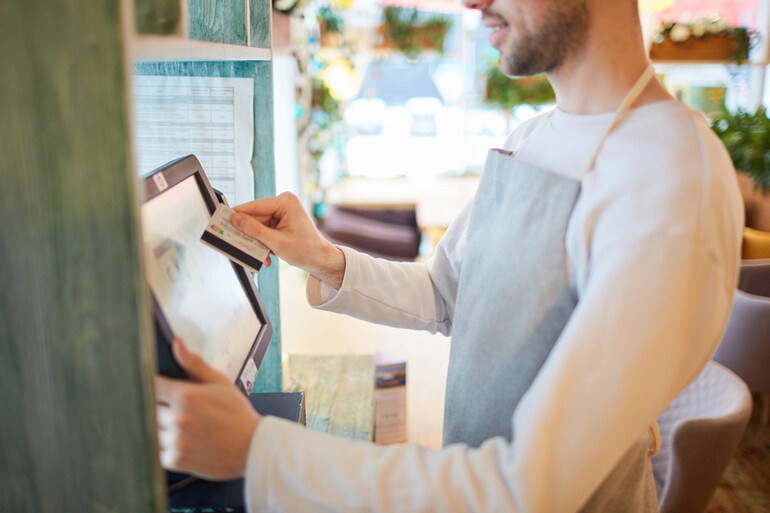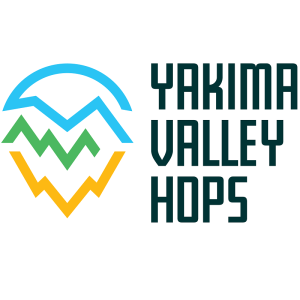Efficiency goes beyond speed—it encompasses precision, structured workflows, and a seamless dining experience. Modern touchscreen displays are changing how restaurants do business by reducing service times, improving workflow, and enhancing customer engagement. The same technology is making its mark in the homebrewing industry, from taprooms and brewpubs to self-serve beer walls that give customers more control over their experience. With contactless dining solutions, customers gain more control over their ordering experience, while restaurants and bars benefit from seamless operations and reduced bottlenecks.
From digital tools for seamless ordering, like self-service kiosks and tabletop touchscreens, to smart kitchen screens that optimize back-of-house coordination, these technologies bridge the gap between customers and employees in the most effective way. Many restaurants are also leveraging QR code sign placements at tables and counters, allowing guests to access digital menus instantly, place orders, and pay without requiring physical menus or direct staff interaction.
The Role of Interactive Displays in Modern Restaurants
Restaurants have embraced interactive displays as a key driver of efficiency, improving workflow while creating a more engaging experience for guests. These digital tools do more than just simplify ordering—they enhance service quality, increase productivity, and ultimately boost profitability.
Key Functions of Interactive Displays in Restaurants:
1. Faster and More Accurate Order Processing
- Self-service kiosks help customers directly place their orders, therefore removing staff-guest conflict.
- Orders are routed straight to kitchen display systems (KDS), therefore minimizing waiting times and guaranteeing correctness.
- With touchless service innovations, digital ordering reduces errors caused by handwriting misinterpretation or verbal mistakes.
2. Improved Kitchen Efficiency and Coordination
- Conventional paper-based ticketing systems might cause missing or lost orders. KDS streamlines the kitchen workflow by displaying orders in real time.
- Smart kitchen displays prioritize and organize incoming orders, helping chefs prepare meals in the correct sequence.
- Integration with POS systems ensures that servers and kitchen staff are always in sync.
3. Enhanced Customer Experience
- With high-quality photos, information, and adjustable options, digital menus let visitors peruse choices at their own speed.
- Some restaurants use interactive tables where customers can place orders, call a waiter, or pay their bills without waiting.
- Guests can see real-time order updates, reducing frustration and uncertainty.
4. Better Staff Productivity
- Servers concentrate more on customer service than they spend personally gathering orders.
- Daily specials, promotions, and menu changes can be quickly shared with consumers using digital signage.
- By digitizing orders taken by waitstaff using handheld POS devices, back-and-forth visits between tables and the kitchen are minimized.
Optimising Order Taking and Processing
A slow order-taking system can clog a whole operation. Interactive displays digitalize how restaurants take, process, and satisfy orders, removing that friction. The same applies to bars, where interactive displays streamline drink orders, reduce wait times, and enhance communication between bartenders and servers, ensuring a smoother and faster service experience.
- Self-Service Kiosks: Customers submit their orders, therefore lowering waiting periods and freeing personnel to concentrate on providing services.
- Tabletop Ordering Systems: Guests order, peruse menus, and even pay without waiting for a waitress. This accelerates service and improves order accuracy as well.
- Smart POS Systems: Orders straight to the kitchen guarantees flawless communication between the front and rear of the house.
It is not only the clients who profit from these solutions; the staff also benefits from them because they minimize stress, enhance order precision, and eliminate costly delays.
Enhancing Customer Engagement and Experience
Interactive screens improve the whole eating experience rather than only simplify ordering. A well-integrated system can increase client involvement and support return business.
- Personalization: Based on customer preferences, digital menus recall past orders, propose matches, and highlight upsells.
- Interactive Promotions: Restaurants can visually appealingly emphasize daily specials, limited-time offers, and loyalty points.
- Entertainment & Engagement: Some restaurants provide interactive materials, trivia, or games to keep patrons occupied while they wait.
Restaurants can achieve higher levels of customer satisfaction and increased spending each visit by giving customers more control and creating a more immersive experience.
Reducing Operational Bottlenecks
The effectiveness of a restaurant is only as strong as the link that is the least effective. If there is a lack of clear communication and an organized workflow, then delays will accumulate, staff will become overwhelmed, and the quality of service will suffer. Interactive displays help remove these bottlenecks by:
- Improving Order Prioritization: Kitchen display systems ensure that chefs see real-time updates, preventing miscommunication and missed tickets.
- Enhancing Team Coordination: Staff can track table status, pending orders, and special requests at a glance.
- Managing High-Traffic Periods: Digital systems help balance workloads during peak hours by automating order distribution.
Restaurants that switch from paper-based operations to digital displays experience fewer errors, improved team coordination, and a more organized workflow.
Data-Driven Decision Making
In addition to contributing to productivity, interactive screens provide restaurants with useful insights that help them make more informed business decisions.
- Inventory Monitoring: Integrated systems track ingredient usage, preventing stock shortages and overordering.
- Customer Behavior Analysis: Digital menus provide insights into popular items, peak hours, and customer preferences, helping optimize offerings.
- Real-Time Performance Tracking: Managers may instantly examine income patterns, order trends, and service speed.
When restaurant proprietors have access to data, they can adjust their menus, streamline their supply chains, and enhance their service techniques based on actual patterns rather than relying on their speculation.
Best Practices for Implementation
Adding interactive displays to a restaurant takes more than just installing screens. It requires planning, training, and integration. The goal is to improve operations, not create distractions. Homebrewers using digital tools face the same challenge. Proper setup and understanding ensure technology enhances brewing rather than complicating it. When it comes to the implementation of these technologies, the following are the recommended practices to follow:
1. Choose the Right Technology for Your Restaurant Type
Not all restaurants need the same type of interactive displays. Consider your business model before investing:
- Fast-food and casual dining: Self-service kiosks and digital menu boards improve order speed and efficiency.
- Sit-down restaurants: Tabletop ordering systems and handheld POS devices help streamline service without eliminating waitstaff.
- High-volume kitchens: Kitchen display systems (KDS) help chefs stay organized and reduce the time they spend preparing food.
Through careful selection of the appropriate solution, you can ensure that technology will enhance rather than complicate your service model.
2. Train Your Staff Thoroughly
- Employees must be comfortable using the new technology before it goes live.
- Provide hands-on training to help staff understand the system’s features, including troubleshooting common issues.
- Create a transition period where both manual and digital systems run in parallel to prevent disruptions.
A well-trained team ensures that interactive displays improve efficiency rather than cause confusion.
3. Integrate with Your Existing Systems
For maximum effectiveness, interactive displays should seamlessly connect with your POS, kitchen workflow, and inventory system.
- Make sure your new technology integrates with your existing software to avoid operational gaps.
- Test connectivity between self-service kiosks, kitchen displays, and POS systems before fully launching.
- Ensure data synchronization so that inventory levels, sales reports, and order tracking remain accurate.
Smooth integration prevents system conflicts and allows for a streamlined, data-driven operation.
The Future of Interactive Displays in Restaurants
Interactive displays will continue to transform the restaurant business as technology continues to advance. Watch out for the following important trends:
- AI-Powered Recommendations: Smart menus that adapt in real-time based on customer choices and preferences.
- Voice-Activated Ordering: Hands-free systems that allow customers to place orders through voice commands.
- Augmented Reality (AR) Menus: Digital menus that let guests visualize dishes before ordering.
Restaurants that adapt to these changes will run more efficiently. A better dining experience keeps customers coming back. Homebrewers can benefit from technology, too. Digital tools help streamline brewing and improve consistency. This keeps the process enjoyable and rewarding.








